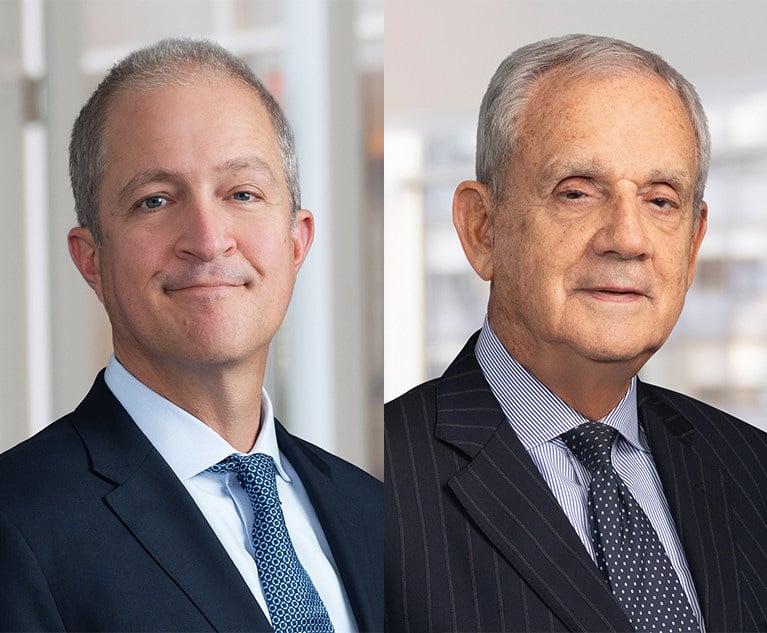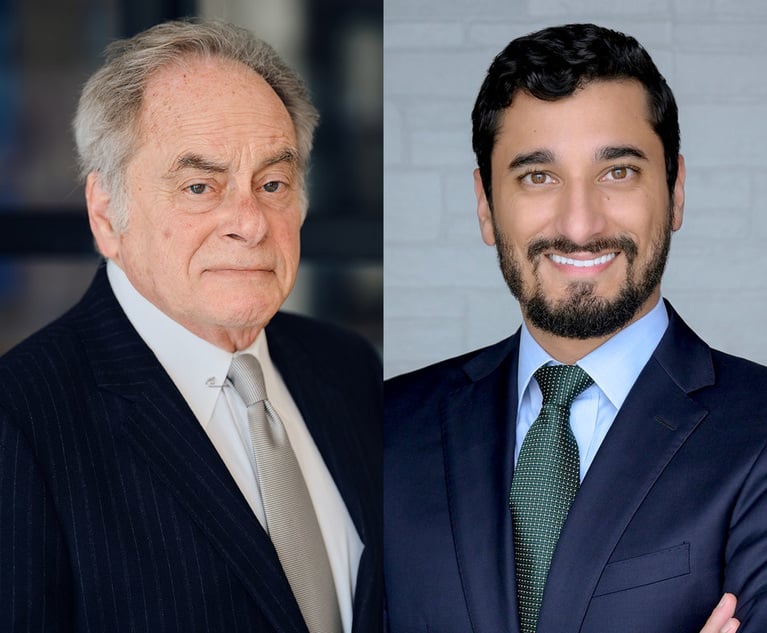
Juror Dynamics in a Post-Pandemic World: How COVID-19 Made It Harder for Jurors To Agree
Although the COVID-19 pandemic appears to have driven a wedge among jurors, there are steps parties and courts can take to foster greater cooperation that will benefit the jurors themselves, the parties and the overall civil justice system.
November 10, 2023 at 10:00 AM
7 minute read
The COVID-19 pandemic left no aspect of life untouched, and the legal system was certainly no exception. Just a few days before courts and offices began to close in March 2020, a federal judge allowed a juror who fell ill to deliberate via FaceTime. Litigators and jury consultants quickly adapted to the new world order, whether it was conducting jury selection through virtual platforms, delivering voir dire from behind masks and plexiglass or discussing cause challenges with the judge and adversaries through wireless headsets.
At the same time that lawyers adapted and courtrooms became virtual, something less tangible was happening as well: group dynamics among jurors were evolving.
Before the pandemic, jury consultants at Immersion Legal saw two hung juries between 2015 and 2020. Since the return to jury trials in late 2020, these same consultants were involved in 12 trials that resulted in hung juries and subsequent mistrials. Beyond this striking disparity, Immersion Legal experienced three additional juries who were only able to reach a verdict after receiving the court's Dynamite Instruction or Allen Charge, and we all noticed that juries seemed to be deliberating much longer than in years past. This left us wondering what could be driving these outcomes.
This content has been archived. It is available through our partners, LexisNexis® and Bloomberg Law.
To view this content, please continue to their sites.
Not a Lexis Subscriber?
Subscribe Now
Not a Bloomberg Law Subscriber?
Subscribe Now
NOT FOR REPRINT
© 2024 ALM Global, LLC, All Rights Reserved. Request academic re-use from www.copyright.com. All other uses, submit a request to [email protected]. For more information visit Asset & Logo Licensing.
You Might Like
View All
Preemptive Litigation: A Potential Approach for a Precise Situation
13 minute read


‘Hawk Tuah Girl’ $440 Million Meme Coin Collapse Sparks Legal Battle
4 minute readLaw Firms Mentioned
Trending Stories
- 1Judicial Ethics Opinion 24-89
- 2It's Time To Limit Non-Competes
- 3Jimmy Carter’s 1974 Law Day Speech: A Call for Lawyers to Do the Public Good
- 4Second Circuit Upholds $5M Judgment Against Trump in E. Jean Carroll Case
- 5Clifford Chance Hikes Partner Pay as UK Firms Fight to Stay Competitive on Compensation
Who Got The Work
Michael G. Bongiorno, Andrew Scott Dulberg and Elizabeth E. Driscoll from Wilmer Cutler Pickering Hale and Dorr have stepped in to represent Symbotic Inc., an A.I.-enabled technology platform that focuses on increasing supply chain efficiency, and other defendants in a pending shareholder derivative lawsuit. The case, filed Oct. 2 in Massachusetts District Court by the Brown Law Firm on behalf of Stephen Austen, accuses certain officers and directors of misleading investors in regard to Symbotic's potential for margin growth by failing to disclose that the company was not equipped to timely deploy its systems or manage expenses through project delays. The case, assigned to U.S. District Judge Nathaniel M. Gorton, is 1:24-cv-12522, Austen v. Cohen et al.
Who Got The Work
Edmund Polubinski and Marie Killmond of Davis Polk & Wardwell have entered appearances for data platform software development company MongoDB and other defendants in a pending shareholder derivative lawsuit. The action, filed Oct. 7 in New York Southern District Court by the Brown Law Firm, accuses the company's directors and/or officers of falsely expressing confidence in the company’s restructuring of its sales incentive plan and downplaying the severity of decreases in its upfront commitments. The case is 1:24-cv-07594, Roy v. Ittycheria et al.
Who Got The Work
Amy O. Bruchs and Kurt F. Ellison of Michael Best & Friedrich have entered appearances for Epic Systems Corp. in a pending employment discrimination lawsuit. The suit was filed Sept. 7 in Wisconsin Western District Court by Levine Eisberner LLC and Siri & Glimstad on behalf of a project manager who claims that he was wrongfully terminated after applying for a religious exemption to the defendant's COVID-19 vaccine mandate. The case, assigned to U.S. Magistrate Judge Anita Marie Boor, is 3:24-cv-00630, Secker, Nathan v. Epic Systems Corporation.
Who Got The Work
David X. Sullivan, Thomas J. Finn and Gregory A. Hall from McCarter & English have entered appearances for Sunrun Installation Services in a pending civil rights lawsuit. The complaint was filed Sept. 4 in Connecticut District Court by attorney Robert M. Berke on behalf of former employee George Edward Steins, who was arrested and charged with employing an unregistered home improvement salesperson. The complaint alleges that had Sunrun informed the Connecticut Department of Consumer Protection that the plaintiff's employment had ended in 2017 and that he no longer held Sunrun's home improvement contractor license, he would not have been hit with charges, which were dismissed in May 2024. The case, assigned to U.S. District Judge Jeffrey A. Meyer, is 3:24-cv-01423, Steins v. Sunrun, Inc. et al.
Who Got The Work
Greenberg Traurig shareholder Joshua L. Raskin has entered an appearance for boohoo.com UK Ltd. in a pending patent infringement lawsuit. The suit, filed Sept. 3 in Texas Eastern District Court by Rozier Hardt McDonough on behalf of Alto Dynamics, asserts five patents related to an online shopping platform. The case, assigned to U.S. District Judge Rodney Gilstrap, is 2:24-cv-00719, Alto Dynamics, LLC v. boohoo.com UK Limited.
Featured Firms
Law Offices of Gary Martin Hays & Associates, P.C.
(470) 294-1674
Law Offices of Mark E. Salomone
(857) 444-6468
Smith & Hassler
(713) 739-1250






